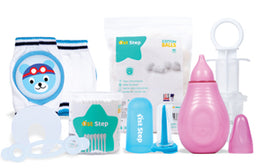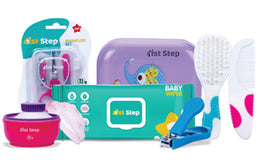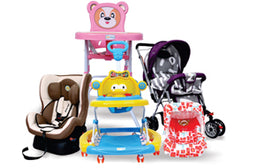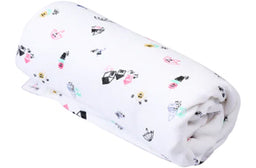How to Treat Milk Blister during Breastfeeding: 7 Tips on Healing Measures
Breastfeeding, a cherished bonding experience, can unfortunately be hindered by the pain of milk blisters, causing distress for mothers. Understanding the complexities of these blisters and how to manage them successfully is critical to maintaining a smooth and happy nursing journey. Join us as we explore crucial methods and tips to alleviate the discomfort of milk blisters, allowing you to nurture your baby with confidence and comfort.
What are Milk Blisters?
A milk blister, also known as a nipple blister, is a typical side effect of breastfeeding. It appears as a small, white or yellow spot on the nipple or areola and is usually caused by a milk duct obstruction. This obstruction can cause discomfort, suffering, and difficulty in nursing.
Are milk Blebs and Blisters the Same Thing?
Breastfeeding can be difficult due to issues such as milk blebs and milk blisters, which, while sometimes used interchangeably, differ in their causes and characteristics. Recognising these disparities is critical for developing effective treatment options.
|
Criteria |
Milk Blebs |
Milk blisters |
|
Appearance |
Small, white, or yellowish spots on the nipple or areola |
Painful, raised, or fluid-filled spots on the nipple or areola. |
|
Cause |
Accumulation of milk within the milk duct |
Excessive pressure, friction, or poor latch during breastfeeding. |
|
Discomfort |
Can cause discomfort and hinder proper latching |
Can cause significant discomfort and potential complications, such as infections. |
|
Treatment |
Focuses on addressing the underlying milk duct blockage |
Involves managing the source of pressure or friction during breastfeeding. |
|
Management |
Requires strategies to clear the milk duct blockage |
Entails ensuring a proper latch and preventing excessive pressure during nursing |
Tackling Milk Blisters: 7 Healing Tips for Breastfeeding Moms

Discover these seven excellent healing strategies designed to assist nursing mothers in managing and alleviating the problems caused by milk blisters. From latching technique optimisation to proactive measures, arm yourself with the knowledge to guarantee a happy and rewarding motherhood journey.
1. Check your baby's latch
Ensuring your baby is properly latched on is essential for healthy breastfeeding. Take a look at how they latch. Are they consuming enough areola? A shallow latch could be the culprit behind those pesky milk blisters. Adjust their position such that their lips cover more of the areola rather than just the nipple.
Think of it like savouring a yummy sandwich – you want them to take a big, satisfying bite, not just a nibble! When infants latch on properly, it not only minimises milk blisters but also ensures they get the nutrition they require while providing them with some relief.
2. Try different positions
Change it up and be inventive with your breastfeeding positions!
Consider it a delightful dance between you and your child. Experimenting with different positions, whether the standard cradle hold, the laid-back position, or the football hold, can relieve pressure on specific areas of your breast, minimising the incidence of milk blisters.
Furthermore, it offers a fun twist to your breastfeeding routine, allowing you and your child to bond in new and exciting ways. So go ahead, rock, and sway some more - finding that sweet spot might make all the difference for you and your baby!
3. Don't pop the blister
No matter how tempting, resist the impulse to pop that nasty milk blister! While popping may be a quick remedy, it might lead to other concerns, such as infections or delayed healing. It's similar to resisting the urge to pop a bubble; it's best to let it go. Instead, concentrate on moderate treatments and preventive actions. Remember that patience is your friend on this path. Trust your body's natural healing process, and you'll be back on track with your breastfeeding experience.
4. Use your breast pump properly
Using a breast pump can make a world of difference and helps to prevent and manage milk blisters. Here is a step-by-step guide on how to use a breast pump properly.
- Step 1: Find the right fit: To avoid excessive friction, choose a breast shield that comfortably fits your nipple size.
- Step 2: Adjust the settings: Begin with the lowest suction level and gradually increase it to a comfortable yet effective level. Avoid using the maximum setting, as it may lead to discomfort and potential injury. If your breast pump is automatic, ensure to adjust the suction settings accordingly, following the same gradual approach to prevent discomfort or injury.
- Step 3: Check for good positioning: Ensure the breast pump is properly centred on your nipple. It not only avoids undue pressure but also guarantees that the milk flows smoothly without being clogged.
- Step 4: Keep your breast pump components clean and sanitised to avoid contamination that could lead to infections or other issues.
- Step 5: Time it right: Avoid prolonged pumping sessions, as this can put excessive pressure on the milk ducts, potentially leading to blisters. Stick to the recommended pumping duration to safeguard your breast health.
5. Change your breast pads often
Changing them frequently is essential for keeping your breasts clean and dry. Keeping your breast pads fresh and dry, like changing a baby's diaper, can minimise moisture buildup, minimising the likelihood of bacterial growth and irritation. So, make it a practice to swap new pads regularly, similar to changing gears on a car - it keeps things working smoothly and comfortably.
Your breasts will appreciate the extra attention and care, resulting in a more pleasant and pleasurable breastfeeding experience for both you and your child.
6. Pump breastmilk for a while
It can significantly relieve breastfeeding moms with milk blisters. You can assist in softening the areola and alleviate pressure in the problematic area by pumping just before nursing, making it easier for your infant to latch on appropriately. Consider it a warm-up session before a workout; it prepares your breasts and promotes a more comfortable breastfeeding experience for you and your child.
Furthermore, pumping for a short amount of time can aid in lowering the danger of engorgement, blocked ducts, and, eventually, milk blisters.
Remember to strike a balance; excessive pumping might lead to overstimulation, exacerbating the issue. Listening to your body and figuring out what works best for you is essential for breastfeeding.
7. Watch for signs of infection
When dealing with milk blisters, it's critical to watch for signs of infection.
- Look for redness, increasing pain, warmth, or pus in the affected area.
- Take note of any flu-like symptoms, such as fever or muscle aches.
- If you observe any signs of infection, contact your healthcare practitioner immediately.
- Follow your healthcare provider's treatment recommendations, which may involve antibiotics or other measures.
- Make your health and well-being a priority to promote a smooth and happy nursing experience for you and your baby.
Explore product options for treating milk blisters with 1st Step
At 1st Step, we offer you some handy products to make your breastfeeding journey smoother. Our easy-to-use breast pumps simplify the process of expressing milk, while the comfortable breast shields ensure that your little one latches on comfortably. Additionally, our super-soft disposable breast pads are here to provide you with extra comfort and protection, allowing you to stay feeling fresh and dry throughout the day.
We understand the difficulties you may be experiencing, and our goal is to give you the greatest possible support and solutions to manage those pesky milk blisters efficiently.
Wrapping Up
While milk blisters can be challenging to manage and treat during the nursing journey, with the correct strategies and best products, they can be effectively managed and treated. By focusing on optimising latching techniques, exploring various nursing positions, and maintaining proper hygiene, mothers can navigate through the discomfort of milk blisters with confidence and ease. It is critical to prioritise self-care and seek expert help to ensure a comfortable and satisfying nursing experience for both the mother and the infant.
Frequently Asked Questions (FAQs)
1. Can milk blisters be prevented?
Yes, effective latching practices and adequate breast hygiene can assist in preventing milk blisters.
2. Are milk blisters harmful to the baby?
While they might be uncomfortable for the mother, milk blisters are not hazardous to the infant if appropriately treated.
3. When should I see a doctor for a milk blister?
If the milk blister persists, grows increasingly painful, or exhibits signs of infection, it is best to seek medical advice and treatment.
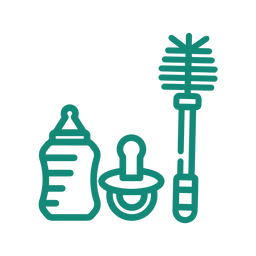 Feeding & Nursing
Feeding & Nursing Safety & Grooming
Safety & Grooming  Bathing & Diapering
Bathing & Diapering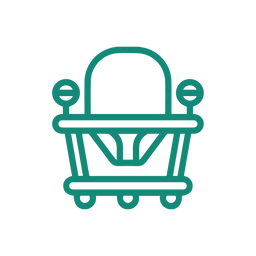 Baby Gear
Baby Gear Mother Needs
Mother Needs Muslin Essentials
Muslin Essentials Baby Toys
Baby Toys



